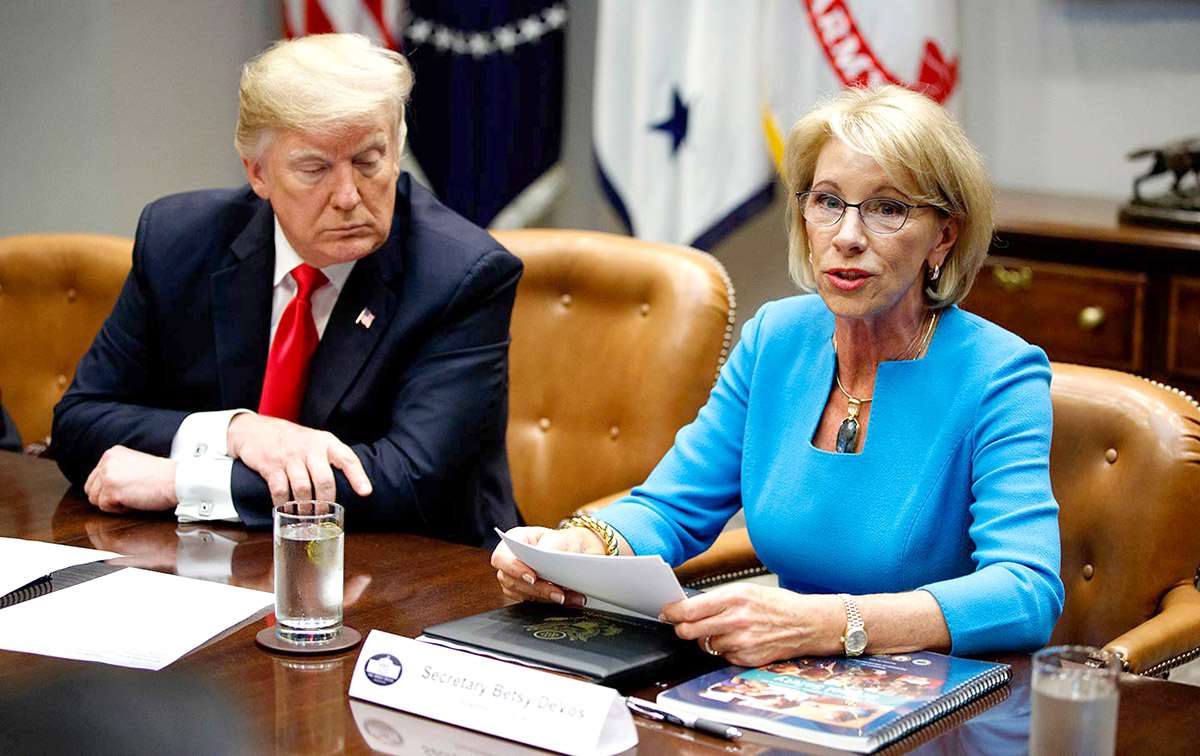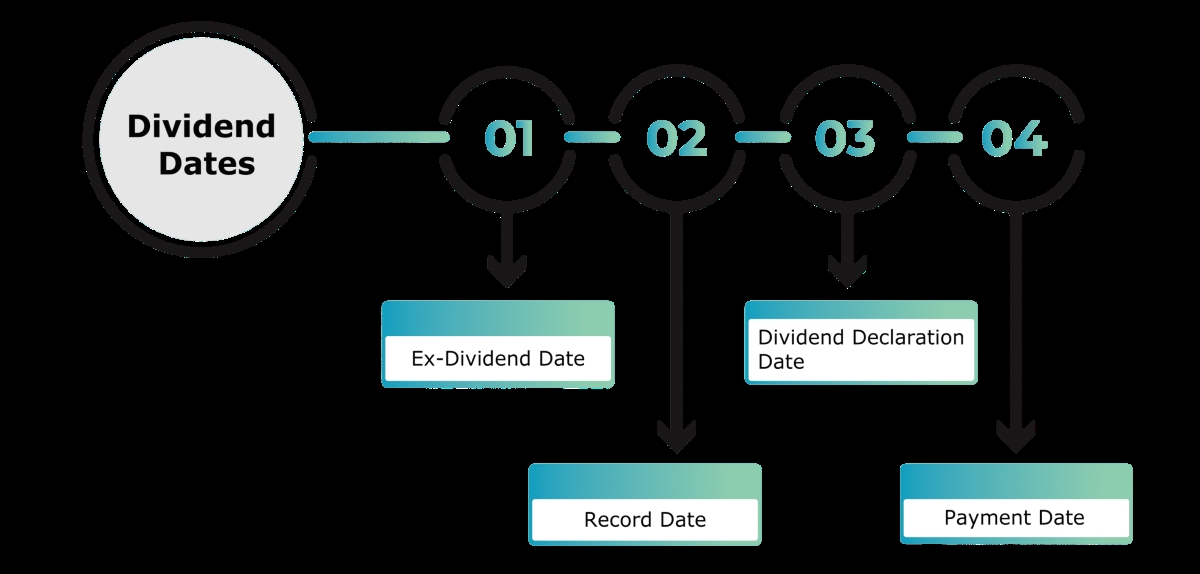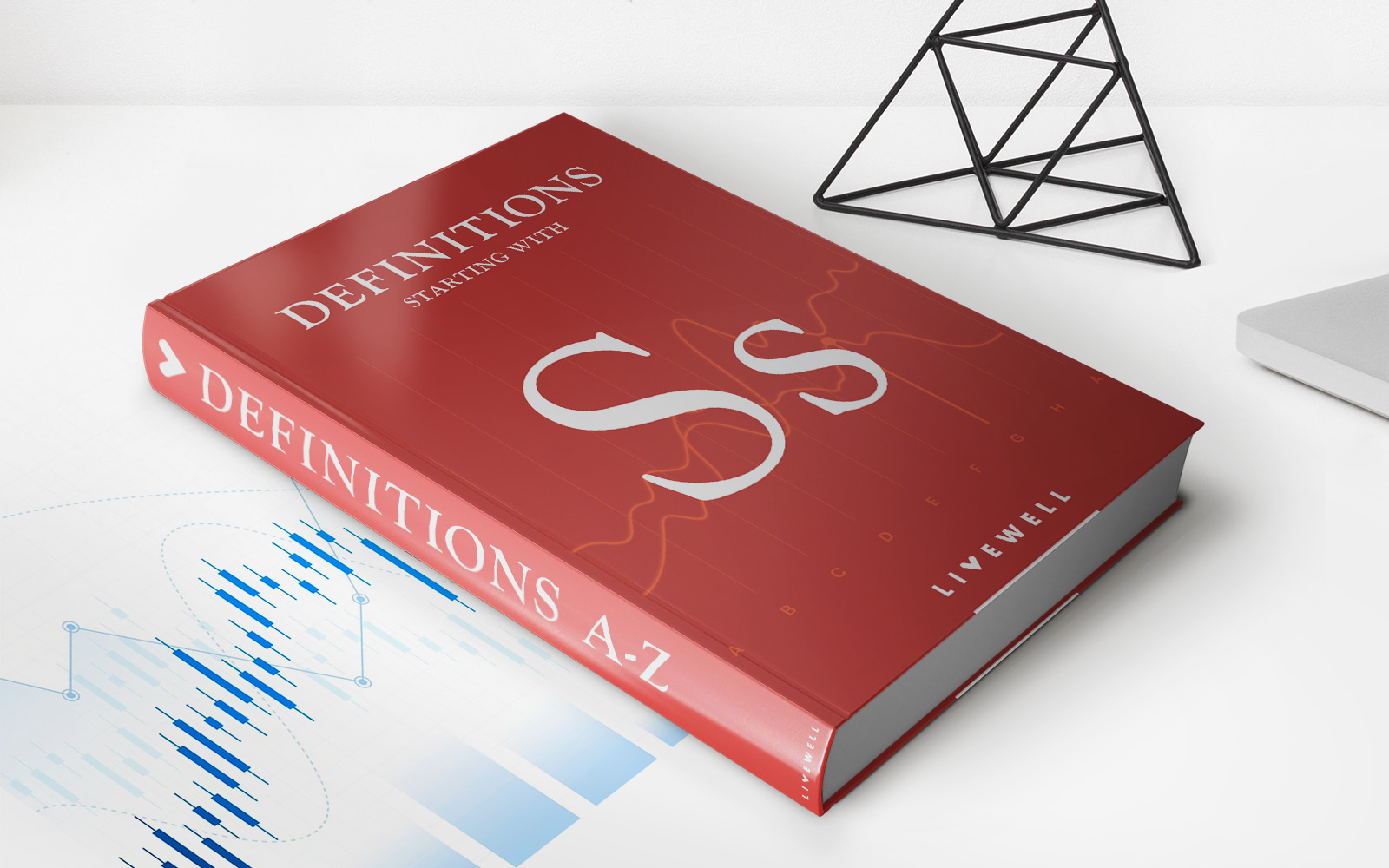

Finance
What Is Trump Going To Do About Student Loans
Published: January 20, 2024
Discover what President Trump's plans are regarding student loans and how they may impact your personal finance. Stay informed and make smart financial decisions.
(Many of the links in this article redirect to a specific reviewed product. Your purchase of these products through affiliate links helps to generate commission for LiveWell, at no extra cost. Learn more)
Table of Contents
Introduction
Student loans have become a significant issue in the United States, with millions of borrowers facing mounting debt and financial struggles. The rising cost of education has led to an explosion in the number of students relying on loans to fund their studies. As the country grapples with this crisis, the question arises: What is President Trump going to do about student loans?
The burden of student loan debt affects not only individual borrowers but also the overall economy. It impedes young graduates from achieving financial milestones such as buying a home or starting a family, hindering economic growth and wealth accumulation. Recognizing the severity of the problem, President Trump has addressed the issue of student loans during his presidency.
In this article, we will explore the current state of student loans, delve into Trump’s stance on student loans, examine his proposed solutions, and consider the criticisms and challenges associated with his approach. Finally, we will discuss the possible outcomes and implications of Trump’s actions on student loans.
It is essential to note that while the information presented here is accurate at the time of writing, the situation surrounding student loans is constantly evolving. Therefore, any policy updates or changes should be considered alongside this article.
Current State of Student Loans
The current state of student loans in the United States is characterized by staggering levels of debt and a growing number of borrowers struggling to repay their loans. According to recent data, the total outstanding student loan debt in the country has surpassed $1.7 trillion, making it the second-largest category of consumer debt, following only mortgage debt.
One of the primary contributors to the soaring amount of student loan debt is the rising cost of higher education. Tuition fees at colleges and universities have been increasing at a faster pace than inflation, leaving many students and their families with no choice but to rely on loans to finance their education. As a result, more than 45 million Americans currently hold student loan debt, averaging around $38,000 per borrower.
Furthermore, the impact of the COVID-19 pandemic has exacerbated the student loan crisis. The economic downturn and job losses have made it even more challenging for borrowers to meet their loan obligations. Many have faced reduced incomes or unemployment, making it difficult to make timely payments, leading to delinquency or default.
The burden of student loan debt extends beyond the borrowers themselves. It also affects the broader economy. Graduates burdened with heavy debt loads often delay important life milestones such as purchasing a home or starting a business. This delay in wealth accumulation and economic activity has ripple effects, restraining consumer spending and dampening economic growth.
The current state of student loans calls for urgent action to alleviate the burden on borrowers and address the long-term implications on the economy. President Trump recognized the need to tackle this issue and has taken steps to address it during his presidency.
Trump’s Stance on Student Loans
During his presidency, Donald Trump expressed his concerns about the student loan crisis in the United States. He acknowledged the need for reforms to ease the burden on borrowers and make higher education more affordable. Trump’s stance on student loans revolved around two main principles: reducing the cost of education and promoting financial responsibility.
Firstly, Trump aimed to address the escalating cost of higher education. He believed that colleges and universities should be held accountable for the rising tuition fees and advocated for increased transparency regarding the true cost and value of attending these institutions. Trump also proposed reforms to ensure that federal funding was allocated to schools that demonstrated a commitment to reducing costs and improving outcomes for students.
Secondly, Trump emphasized the importance of promoting financial responsibility among borrowers. He sought to encourage greater awareness of the financial implications of taking on student loan debt and advocated for increased financial literacy education. Trump also proposed changes to the repayment system, including the simplification of income-driven repayment plans and a cap on the amount that borrowers would need to repay each month.
Additionally, the Trump administration made efforts to streamline and expedite the loan forgiveness process for public servants, such as teachers and members of the military, who have dedicated their careers to serving the community.
While Trump’s stance on student loans prioritized reducing the cost of education and promoting financial responsibility, critics argue that his approach did not go far enough. Some believed that his proposals did not adequately address the high levels of student loan debt already accumulated or provide sufficient relief for existing borrowers.
It is important to note that Trump’s presidency ended in January 2021, and subsequent administrations may adopt different approaches to tackle the student loan crisis.
Trump’s Proposed Solutions for Student Loans
Donald Trump proposed several solutions to address the student loan crisis during his presidency. These solutions aimed to reduce the burden of student loan debt and improve the affordability of higher education. Here are some of the key proposals put forward by the Trump administration:
- Reforming income-driven repayment plans: Trump advocated for simplifying income-driven repayment plans, which tie monthly loan payments to borrowers’ income level. The proposal aimed to streamline and consolidate the existing repayment plans, making them easier to understand and navigate for borrowers.
- Setting a cap on monthly loan repayments: Another proposal put forth by the Trump administration was to cap monthly loan repayments at a certain percentage of borrowers’ discretionary income. This measure sought to ensure that loan payments remained affordable and manageable for borrowers, especially those with lower incomes.
- Improving financial literacy education: Trump recognized the importance of financial literacy in helping individuals make informed decisions about their student loans. His administration proposed increasing financial literacy education to ensure that borrowers had a better understanding of the long-term financial implications of taking on student loan debt.
- Encouraging institutional accountability: Trump believed that colleges and universities should be held accountable for the rising cost of education. His administration proposed reforms to incentivize schools to reduce costs and improve outcomes for students. This included providing more transparency regarding the true cost and value of attending higher education institutions.
- Simplifying the loan forgiveness process: Trump aimed to streamline and expedite the loan forgiveness process for public servants, such as teachers and members of the military, who qualify for loan forgiveness programs. This proposal sought to make it easier for these individuals to receive the loan forgiveness they are entitled to for their public service.
While these proposed solutions aimed to address some of the challenges associated with student loans, critics argued that they did not go far enough in providing comprehensive relief for borrowers or tackling the broader issue of the rising cost of education. It is important to note that the implementation of these proposals and any potential changes would depend on subsequent administrations and policymakers.
Criticisms and Challenges
While Donald Trump’s proposed solutions for student loans aimed to alleviate the burden on borrowers, they have faced criticisms and challenges from various stakeholders. Here are some of the key criticisms:
- Insufficient relief for existing borrowers: Critics argue that Trump’s proposals did not provide sufficient relief for borrowers already burdened by student loan debt. The simplification of income-driven repayment plans and the cap on monthly loan repayments, while beneficial for future borrowers, did not address the challenges faced by those already struggling to repay their loans.
- Limitations in addressing the root cause: Some critics argued that Trump’s solutions did not adequately address the root cause of the student loan crisis – the rising cost of education. While his proposals encouraged institutional accountability and transparency, they did not offer comprehensive measures to control or reduce the ever-increasing tuition fees.
- Impact on federal funding for higher education: Trump’s proposals, such as tying federal funding to schools’ commitment to reducing costs, raised concerns about potential consequences for institutions that heavily rely on federal aid. Critics worry that this approach could lead to a reduction in funding for colleges and universities, potentially limiting access to higher education for disadvantaged students.
- Skepticism regarding loan forgiveness for public servants: Some critics expressed skepticism about the Trump administration’s plan to simplify the loan forgiveness process for public servants. They raised concerns about the potential limitations and eligibility criteria that could hinder borrowers from receiving the loan forgiveness they are entitled to, potentially discouraging individuals from entering public service careers.
- Changing political landscape and policy shifts: It’s important to note that the student loan crisis and associated policies are subject to changes with each administration. Trump’s proposals and actions related to student loans may experience policy shifts or reversals under subsequent administrations, leaving the long-term impact uncertain.
Addressing the criticisms and challenges surrounding student loans requires comprehensive solutions that take into account the diverse needs of borrowers, the affordability of education, and the sustainability of the higher education system.
Possible Outcomes and Implications
The discussion surrounding student loans and the proposed solutions under the Trump administration carries several potential outcomes and implications. Here are some possibilities to consider:
- Immediate relief for future borrowers: Trump’s proposed reforms, such as simplified income-driven repayment plans and capped monthly loan repayments, could provide immediate relief for future borrowers by making loan repayment more manageable and affordable.
- Increased financial literacy: The emphasis on financial literacy education may lead to a more informed generation of borrowers who understand the long-term implications of taking on student loan debt. This could result in more responsible borrowing and improved financial decision-making.
- Accountability for higher education institutions: Trump’s push for increased institutional accountability and transparency may drive colleges and universities to reassess their cost structures and prioritize affordability for students. This could potentially lead to more sustainable tuition fee models and a reduction in the overall cost of higher education.
- Challenges in implementing reforms: The implementation of proposed reforms may face challenges, including budgetary constraints and resistance from higher education institutions. The complexity of the student loan system and the need for coordination among different government agencies could also present obstacles to effective change.
- Potential long-term impact: The success or failure of Trump’s proposed solutions and any subsequent policy changes will determine the long-term impact on student loans and higher education affordability in the United States. These outcomes will depend on the actions of subsequent administrations and policymakers.
- Continued need for comprehensive solutions: Regardless of the specific outcomes, the student loan crisis requires ongoing attention and comprehensive solutions. Tackling the root causes of rising education costs, exploring alternative financing options, and addressing the financial challenges faced by existing borrowers should remain priorities for policymakers.
Ultimately, the path forward in addressing the student loan crisis will require collaborative efforts, innovative strategies, and a commitment to ensuring access to affordable education for all. The outcomes of previous initiatives and the evolving policy landscape will shape the future of student loans in the United States.
Conclusion
The issue of student loans in the United States is a complex and multifaceted problem that affects millions of borrowers and has far-reaching implications for the economy. During his presidency, Donald Trump recognized the need for reform and proposed solutions to address the burden of student loan debt and improve the affordability of higher education.
While Trump’s proposals, such as reforming income-driven repayment plans and promoting financial responsibility, aimed to provide relief for future borrowers and encourage greater accountability among higher education institutions, they faced criticisms for not adequately addressing the challenges faced by existing borrowers or tackling the root causes of rising tuition fees.
Looking ahead, the implications of Trump’s proposed solutions and any subsequent policy changes will largely depend on the actions of subsequent administrations and policymakers. It is crucial to continue exploring comprehensive solutions that address the high cost of education, promote financial literacy, and provide meaningful relief for borrowers burdened by student loan debt.
The student loan crisis requires ongoing attention, as it affects not only individual borrowers but also the broader economy and our society as a whole. It demands a collective effort to find sustainable and equitable solutions that balance the needs of borrowers, educational institutions, and the nation’s economic future.
As we navigate the evolving landscape of student loans, it is essential to remain vigilant, advocating for policies that promote accessibility, affordability, and financial well-being for all individuals seeking a higher education. By addressing the challenges and working towards comprehensive reform, we can hope to create a system where education is accessible and student loan debt is manageable for generations to come.














